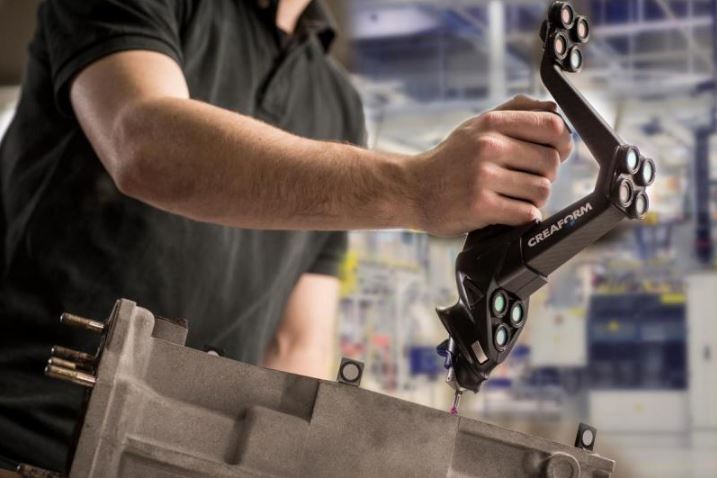For many production lines managers, product developers, and manufacturing businesses, coordinate measuring machines (CMMs) play a vital role in delivering reliable, accurate meteorological data about prototypes and newly produced parts, without which quality control would be much more difficult. For this reason, new developments in the world of metrology are generally met with great interest among industrialists — especially when they involve new and improved ways of gathering data and applying it to cutting edge manufacturing applications.
In recent years, one of the most notable trends has been the growing number of options for businesses looking to purchase portable CMMs. The most common types of CMM are stationary, and rely on having parts brought to them for measuring. Some of these CMMs, like the gantry-style machines used by the automotive and aerospace industry, are large enough to take up an entire room, while others, like the cantilever or bridge versions, or often quite small. In all cases, the CMM is designed to remain perfectly stable while the probe gathers data.
Portable CMMs, on the other hand, use a range of different technological tools, including laser and white light scanners, and are moved around the object being measured by an operator. Portable CMMs are much more flexible than stationary CMMs, and can be used for a variety of different tasks, both on a work site or a shop floor.
The growing popularity of portable CMMs is something frequently noted by those who follow news and information about CMM equipment and there are many theories as to why this is. For decades, stationary CMMs dominated the market and provided dependable metrology solutions for a variety of different industrial applications, and while there is certainly no shortage stationary CMMs being produced, the fact that so many consumers are opting to go with portable options like ROMER Portable Arms or Leica Laser Trackers speaks to changes in the manufacturing industry.
In most cases, it is the flexibility that comes with a portable CMM that is most appealing. Because a portable arm, for example, can be used to gather meteorological data about a particular facet of a newly produced part immediately, the technician has a much greater degree of control over the measurement process, and if they need quickly gather data about something they don’t need to run the entire measurement program. Portable CMMs are also ideally suited to gathering high-level metrological data on job sites or in other contexts where a traditional CMM could not be operated.
As production lines become more sophisticated, the role CMMs play in them is changing as well. In many cases manufacturers want CMMs that offer a degree of versatility and which can be used for a range of different purposes. Because portable CMMs can handle a wide range of metrological tasks in a variety of different contexts, they are increasingly becoming the CMM of choice for businesses that want to maximize their flexibility and responsiveness to meet the industrial challenges of the 21st century.


